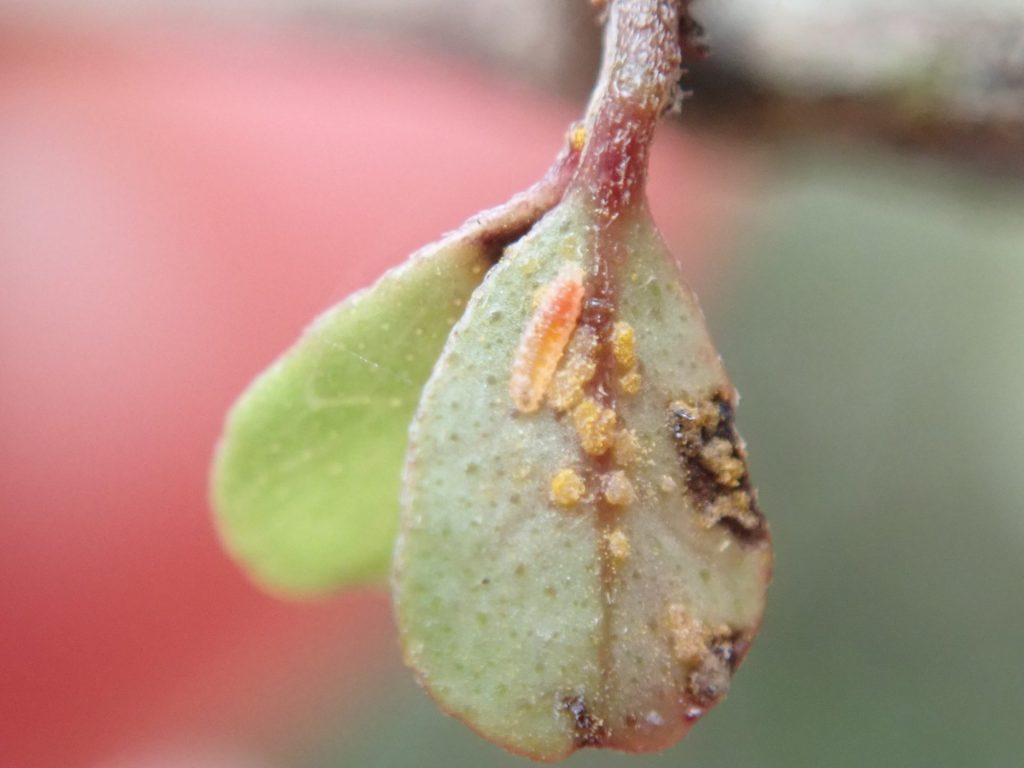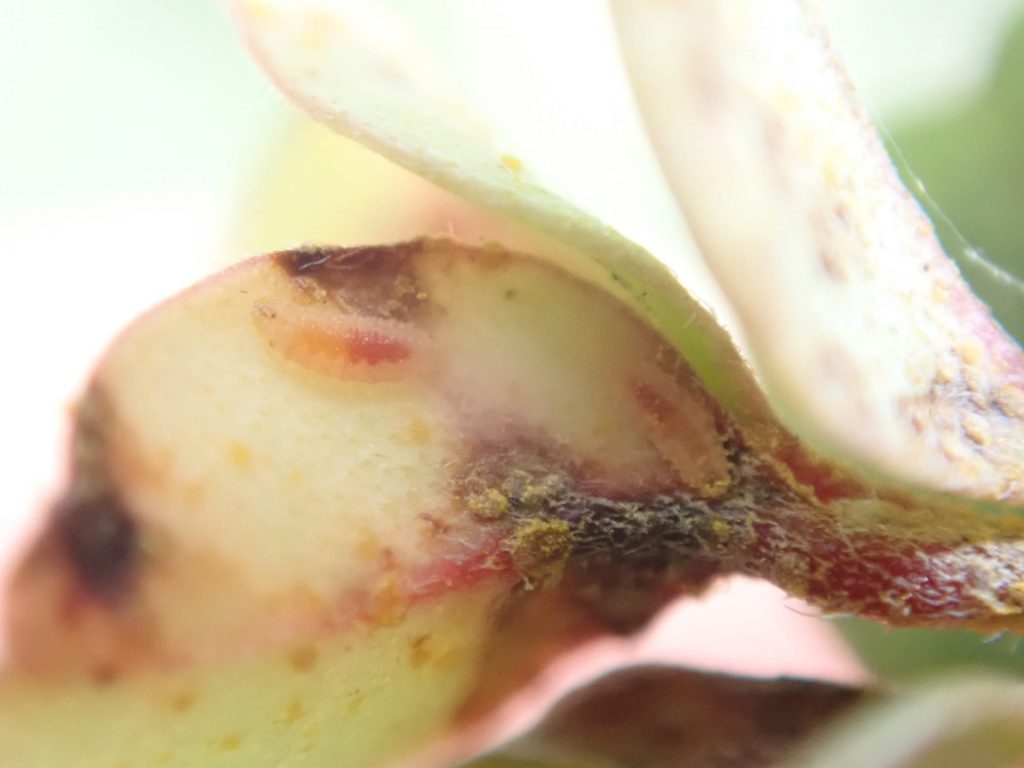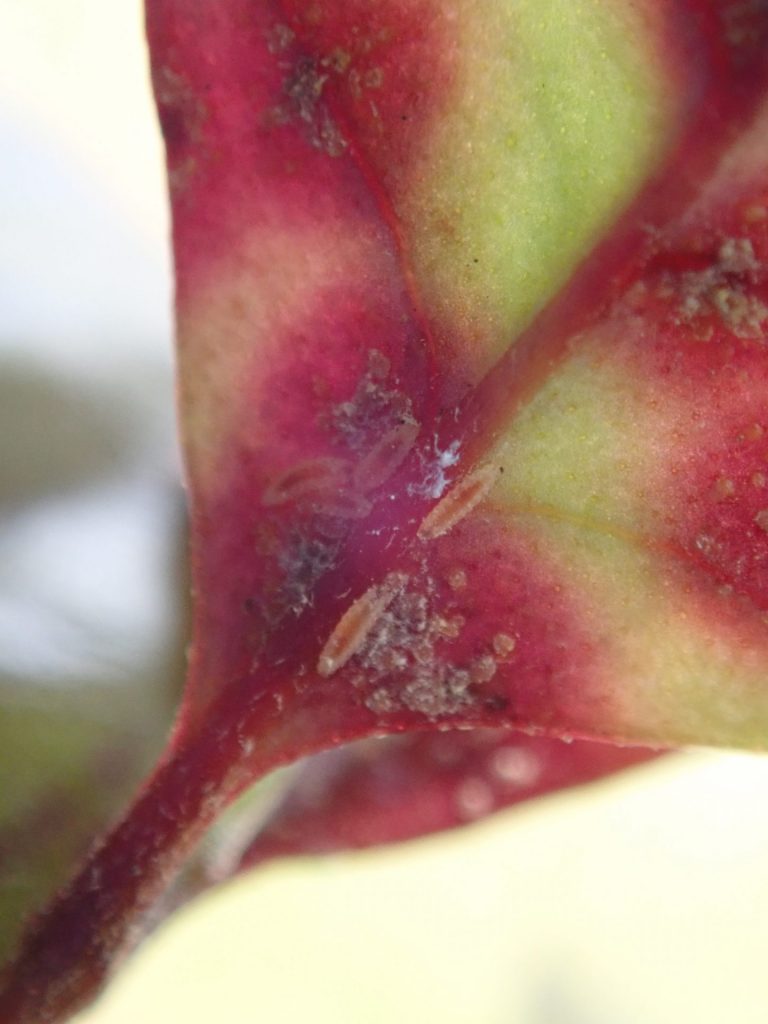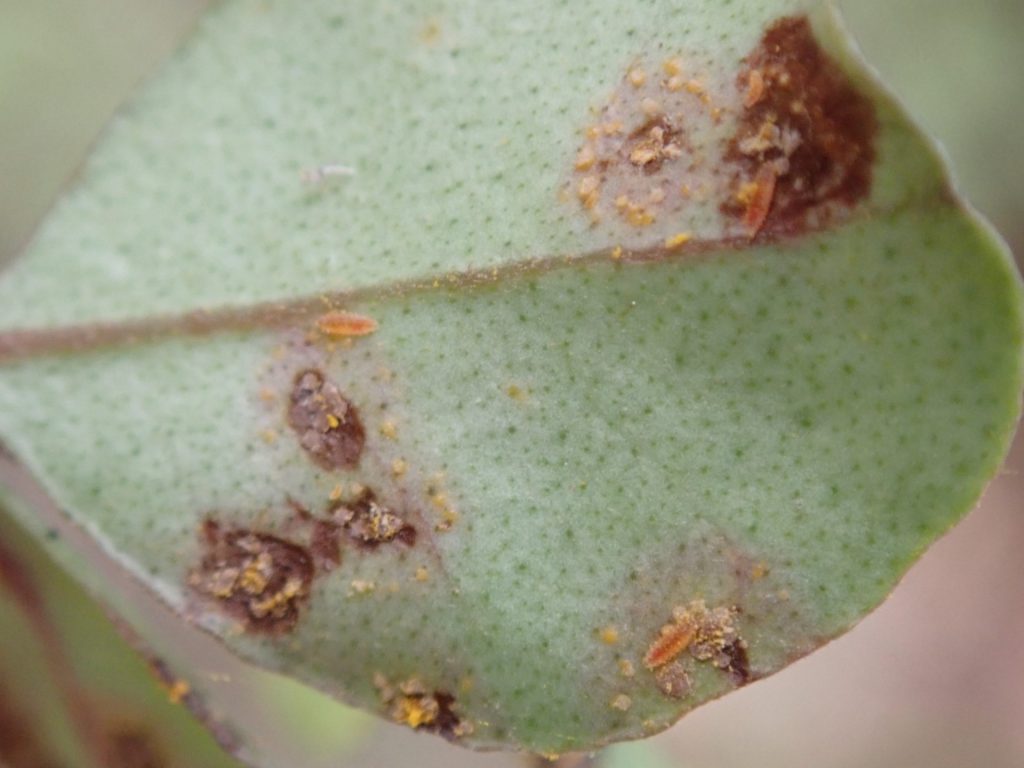New gall midge eats the fungus that causes myrtle rust
A new species of gall midge, Mycodiplosis constricta, has been described. Taxonomists and entomologists may be excited to know that this is the first described species of Mycodiplosis recorded from New Zealand. For the rest of us, the most interesting thing about this species is what it feeds on: the urediniospores of Austropuccinia psidii, the fungus that causes myrtle rust.

In 2018, Roanne Sutherland (who was working for Scion at the time) started finding small larvae on the leaves of a tree from the Lophomyrtus genus. Roanne, who was assessing myrtle rust infection levels on Lophomyrtus species, was surprised by what the larvae were doing: they appeared to be feeding on the urediniospores of A. psidii, the fungal pathogen responsible for myrtle rust.
“The larvae turn this bright orange color because they are packed full of these spores,” says Roanne.
Roanne and her team suspected that this may be a new species. They sent a report to MPI along with the COI sequence (the sequence of a segment of the Cytochrome Oxidase unit I mitochondrial gene) of the larvae.
“In undertaking their investigation, MPI found that the genetic sequence was a match for another sample collected in Hamilton in 2012/2013,” says Roanne.



The larvae has proven to belong to an undescribed species of rust- and mildew-feeding gall midge from the genus Mycodiplosis. The species, Mycodiplosis constricta sp. nov., is described in a paper published in New Zealand Entomologist this year. The work was funded by Scion through the Strategic Science Investment Fund. The paper describes the morphology of the male, female, pupa and larva. It also provides the COI sequence and the currently known geographical distribution of M. constricta.
It could be that the gall midge is native to New Zealand and would have been feeding on other rusts prior to the arrival of myrtle rust in 2017. It could also be that the midge has been introduced from elsewhere. Greater sampling and identification of Mycodiplosis from New Zealand rusts will help us understand the origin of the fly and the diversity of species found here.
An exciting possibility is that this new species is suppressing myrtle rust by reducing the numbers of viable urediniospores of A. psidii.
“There are quite a few of these larvae out there, but I don’t think there are enough to control all of the spores on a plant,” says Roanne. “Even so, I think they could at least help suppress the spores.”
The effectiveness of this species as a suppression agent remains to be determined. More research will be needed to evaluate the true impact this species is having on myrtle rust. Scion is continuing its research with this fly and is aiming to assess its distribution and host range in New Zealand over the coming year.
Read the full research article here
Posted July 2022